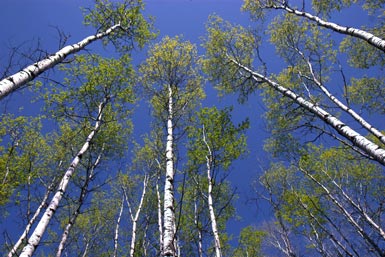Holiday season – View holiday hours for City of Winnipeg facilities and services from December 24 to January 1.
Aspen Forest
Aspen forest habitat is the most common natural habitat remaining in Winnipeg and the surrounding region. It is dominated by nearly pure stands of trembling aspen, often with grassland openings. Where these grasslands are undisturbed, they still contain native tall-grass or mixed-grass prairie plants. Where these grasslands are in lowlying areas, they are home to wet meadow species or they may contain small wetlands. Aspen forest stands mixed with openings of native prairie are sometimes referred to as "aspen parkland". Aspen forest also may contain bur oak trees in dry areas and balsam poplar trees in lowlying, wet areas. Manitoba maple and green ash trees may also be present.

Sunlight passes easily through the canopy of the aspen forest, allowing a rich variety of shrubs, grasses and wildflowers to grow in its understorey. Many of the shrubs provide food (seeds, berries or nuts) for wildlife. Red-osier dogwood is scattered through the aspen forest, particularly in moist locations. Roses, chokecherry, pincherry and saskatoon occur on the edges of the aspen forest. Disturbed areas are often occupied by wild raspberry. White-tailed deer, red squirrels, eastern chipmunks, eastern cottontail rabbits and many birds all take refuge in aspen forest.
